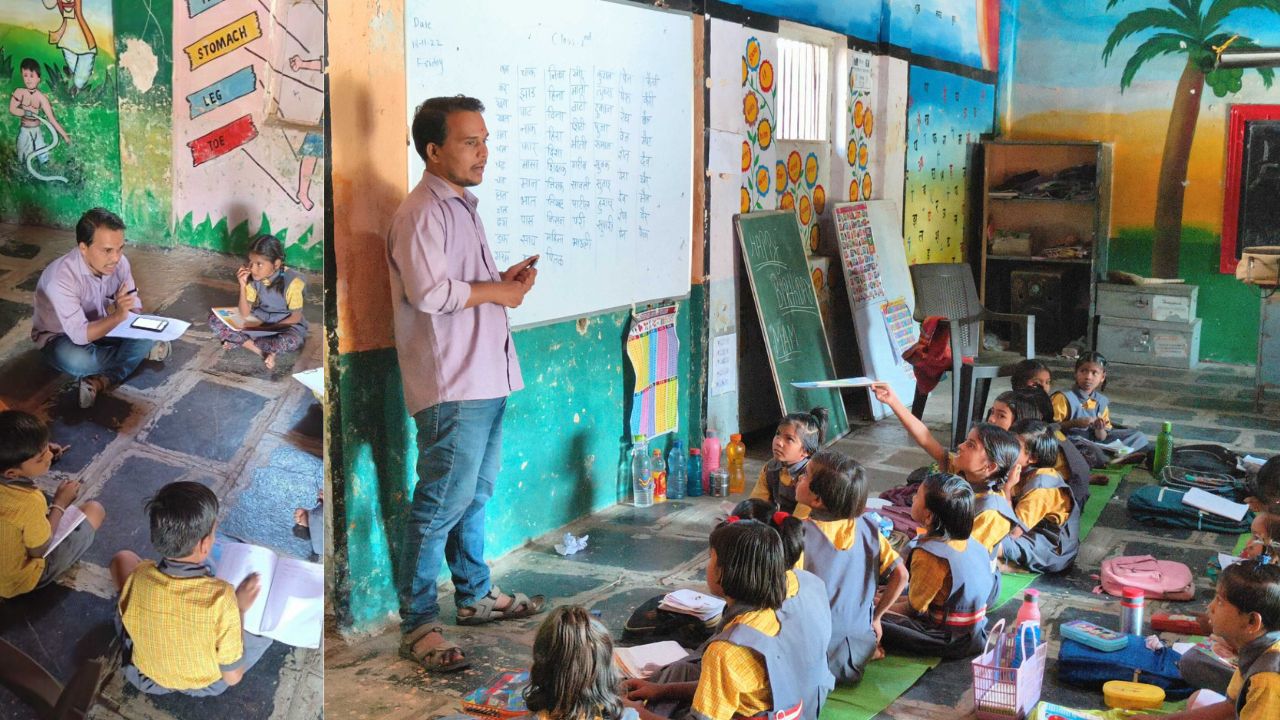Leadership For Equity (LFE), an organization dedicated to transforming the quality of education in India, has embarked on an exploration of Early Childhood Care and Education (ECCE). Our work in Chandrapur has provided valuable insights into the systemic challenges in ECCE, as well as the innovative solutions that can bring about meaningful change.
The early years of childhood are critical, forming the foundation for cognitive health, social-emotional learning, and overall development. In India, nearly 80 million children aged 3-6 years are in need of quality early education, with many coming from disadvantaged backgrounds. Accessible, high-quality ECCE has never been more important. Research has shown that early educational investments yield long-term benefits, including reduced school dropout rates and improved development outcomes.
The Anganwadi system, established in 1975 under the Integrated Child Development Services (ICDS) scheme, is one of the largest networks of pre-schools in the world, playing a crucial role in ECCE. Despite its extensive reach, the system faces significant barriers to providing quality education. The National Education Policy (NEP) 2020 has reinforced the importance of ECCE by outlining a continuous five-year foundation phase, which includes three years of pre-primary education and two years of primary schooling. However, the fragmented approach to ECCE between the ICDS and the Education Department, along with insufficient teacher training and curriculum alignment, has created a disjointed educational experience for children.
Confronting the Challenges of ECCE in India
In Chandrapur, we observed several challenges that hinder the effectiveness of ECCE. While the ICDS has made strides in improving nutritional support, the emphasis on early education has often been overshadowed. Anganwadi workers, who are at the heart of ECCE in these centers, face the dual burden of delivering both educational and health-related services. This leaves little time for focused teaching, compounded by a lack of specialized training in early childhood pedagogy.
Another major issue is the transition from Anganwadi to primary school, where a significant learning gap exists. The curriculum and teaching methods in Anganwadi centers are often play-based, while primary schools focus more on formal academic subjects. This misalignment leads to a disjointed experience for children as they move from Anganwadi to grade one. NITI Aayog’s 2023 report on the ICDS Scheme highlights this problem, pointing out that the lack of continuity in education between these phases disrupts children’s learning progress.
The Chandrapur Model: A Collaborative Approach
In response to these challenges, LFE initiated a unique approach in Chandrapur to strengthen ECCE by fostering collaboration between the District Institute of Educational Training (DIET) and ICDS (which operates under the Ministry of Women and Child Development). This multi-departmental convergence, a first in the district, focused on enhancing the capacity of Anganwadi workers and primary school teachers, ensuring a smoother transition for children from Anganwadi centers to primary schools.
A key challenge was the absence of a dedicated body for Anganwadi worker training and curriculum development, similar to the systems in place for primary school education under DIET. Working closely with DIET, ICDS, and the Education Department of Zilla Parishad, we developed clear roles and responsibilities and created a long-term capacity-building plan for ECCE. This collaboration led to the development of a comprehensive ECCE structure, with DIET taking the lead in training both Anganwadi workers and primary school teachers to ensure continuity in children’s learning experiences.
One of the significant barriers we addressed was the readiness gap for children transitioning from Anganwadi to grade one. In collaboration with DIET Chandrapur, LFE introduced the Balvatika Assessment Programme, a common school readiness assessment, implemented across 2,500 Anganwadi centers. This tool, aligned with the state’s Aakar curriculum, enabled Anganwadi workers to assess the readiness of each child and share this information with primary school teachers. This led to a more personalized approach to addressing the learning needs of each child as they entered grade one.
We also focused on fostering communication between Anganwadi workers and primary school teachers. Regular workshops and meetings were organized to discuss individual children’s progress, share observations, and ensure a shared understanding of school readiness. To further support this collaborative approach, we introduced report cards to document each child’s developmental milestones and readiness for school.
Moving Forward: Scaling the Chandrapur Model
The success of the Chandrapur model demonstrates the potential for systemic reform in ECCE through collaboration and creativity. By bringing together the Education Department, ICDS, and DIET, we have established a framework for a seamless transition between Anganwadi centers and primary schools. For this model to be scaled effectively, several key considerations must be addressed:
- Aligning leadership across departments: It is crucial to align the visions and priorities of the Education and Women and Child Development departments to ensure a unified approach to ECCE.
- Securing funding: Sustainable funding sources must be identified to eliminate the financial barriers to scaling these initiatives.
- Curriculum alignment: Clear links between the learning resources for pre-primary and primary grades must be made evident to both Anganwadi workers and primary school teachers.
- Data-driven decision-making: Implementing a systematic channel for gathering timely data is essential to ensure that decisions are informed by the needs of teachers and students.
As we work to expand this model across other districts in India, the lessons learned from Chandrapur will inform our efforts to align curricula, enhance teacher training, and ensure that every child receives the high-quality early education they deserve.
At LFE, we are committed to breaking through the systemic barriers in ECCE and creating a brighter future for India’s children. We believe that by building a robust, collaborative ecosystem, we can ensure that every child in India has access to the high-quality education they need from the very beginning of their educational journey.


